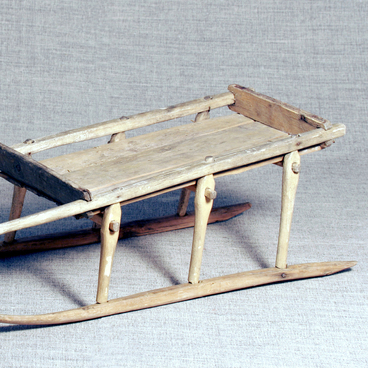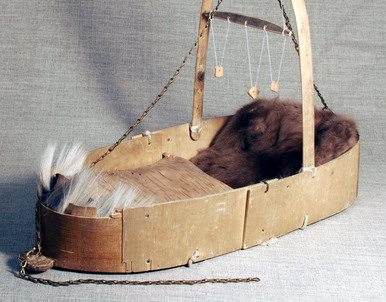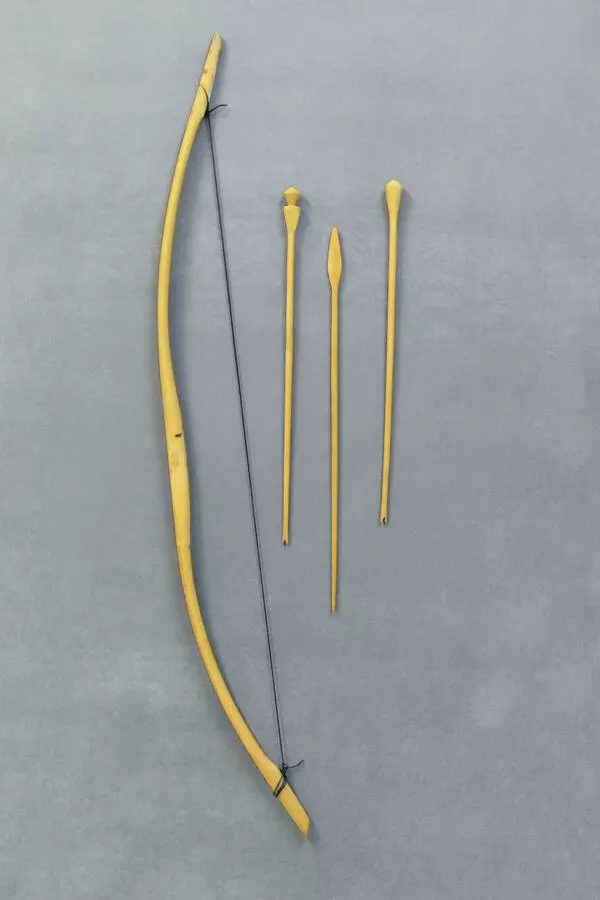Just like hunting wild animals and birds, fishing is an important part of the the Forest Nenets traditional household activities. They don’t catch fish for trading but solely for personal needs, generally it is pike, ide, roach. The Nenets use both active and passive methods of fishing. The active ones include using trotlines and seines, the passive ones imply set nets, special fencing and traps.
Access to vast water-meadows in the river Pur valley formed a special way of fishing by the Forest NEnets, when a river is closed with some sort of fence made of poles and called “zapOr”. Special traps, woven of willow branches and called “mOrda”, are set between the poles. Several mOrdas fastened together with a rope or a willow-braided plait can be set at a time.
A mOrda’s size and appearance depend on the type of water and fish. All constructions are cone-shaped, either full or truncated, with a square, rectangular or oval base. Rear sides or shoulders of a mOrda are convex, inside there’s one or two baskets in the shape of a funnel. First, fish get into a small basket, then through a narrow orifice they get into the big one and get trapped. At the broad end of a morda, there’s a removable grate which closes the orifice when the tackle is full with fish.
Making such a trap requires a lot of efforts and concentration and it usually takes a few days. The NEnets use different material for a mOrda: the base is made of cedar, fir, wild-cherry or willow roots; willow or larch twig are usually used for its rear sides. Willow is good for this purpose because it is barely affected by water, which makes the tools durable and strong.
Rasha Ayvasedo, a Chaselka camp resident, produced a morda with a traditional method and provided it to the ethnographical exposition of Gubkinsky Museum of the North Development.
Access to vast water-meadows in the river Pur valley formed a special way of fishing by the Forest NEnets, when a river is closed with some sort of fence made of poles and called “zapOr”. Special traps, woven of willow branches and called “mOrda”, are set between the poles. Several mOrdas fastened together with a rope or a willow-braided plait can be set at a time.
A mOrda’s size and appearance depend on the type of water and fish. All constructions are cone-shaped, either full or truncated, with a square, rectangular or oval base. Rear sides or shoulders of a mOrda are convex, inside there’s one or two baskets in the shape of a funnel. First, fish get into a small basket, then through a narrow orifice they get into the big one and get trapped. At the broad end of a morda, there’s a removable grate which closes the orifice when the tackle is full with fish.
Making such a trap requires a lot of efforts and concentration and it usually takes a few days. The NEnets use different material for a mOrda: the base is made of cedar, fir, wild-cherry or willow roots; willow or larch twig are usually used for its rear sides. Willow is good for this purpose because it is barely affected by water, which makes the tools durable and strong.
Rasha Ayvasedo, a Chaselka camp resident, produced a morda with a traditional method and provided it to the ethnographical exposition of Gubkinsky Museum of the North Development.




